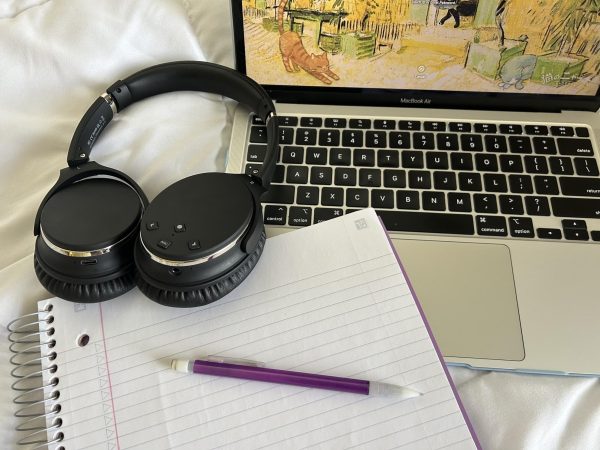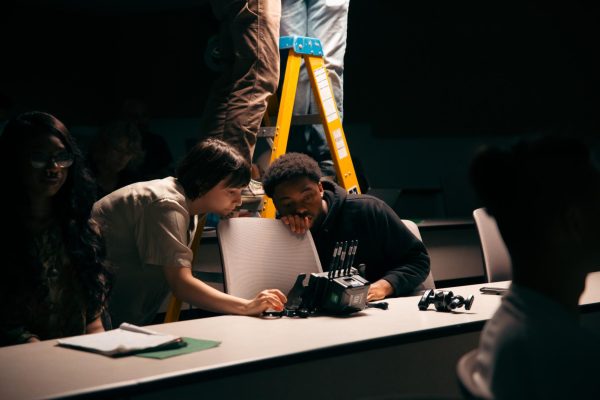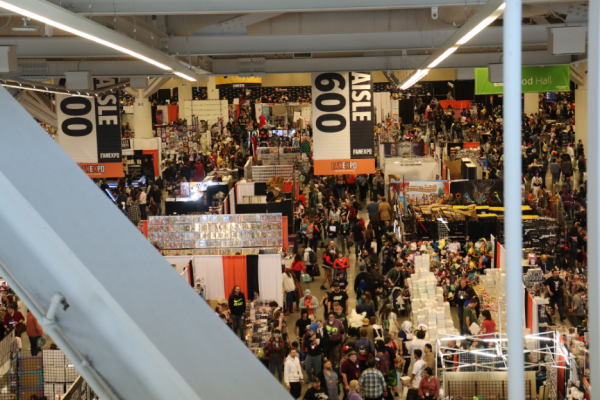Crystals are for more than just decoration
February 23, 2005
Liquid crystals have everyday purposes
Many objects around campus use liquid crystal technology. Currently parking meters use a twisted nematic liquid crystal display.
Credit: Andrew popik
Doug Bryant, manager of display engineering, inspects a machine at the Liquid Crystal Institute used for aligning crystals inside of liquid crystal displays yesterday afternoon.
Credit: Andrew popik
Electronic books thinner than the traditional texts students lug around campus. Rings changing colors with one’s mood. The television in the Hub broadcasting current events to hungry college kids daily.
The common tie between all these objects?
They all use liquid crystal technology.
The first step of understanding the basics of liquid crystals, said Antal Jakli, assistant professor at the Liquid Crystal Institute, is to picture a molecule in various states of being. Objects in the solid state can take a crystalline form. Between the liquid and crystal states, the phase of the liquid crystal exists.
Liquid molecules have space between their arbitrary positions, Jakli said. Crystal molecules have a fixed position, but liquid crystal molecules have random positions with some space to move. But, Jakli said, their regular orientation is similar to that of a crystal. This allows the molecules to flow like a liquid, but the molecules always realign.
One way a person can see this in action, Jakli said, demonstrating, is to press the screen of a liquid crystal display on a laptop. The colors ripple and change in the upset spot as the molecules realign.
The liquid crystal molecules are sandwiched between two glass plates, a conducting layer and a lining layer, Jakli said. In a TV screen, these glass plates may be separated by as little as a micrometer.
When voltage is applied to the display, the crystals are reoriented, changing their optical properties, or the way they portray images. The way liquid crystals react with light gives them many possible uses.
For example, the screen, an electronic book or map that uses liquid crystals, reflects light in such a way that it allows text to be read. Once the image is uploaded, no electricity is required to view it, said James Maxwell, public relations coordinator for the Liquid Crystal Institute. An e-book produced by Panasonic uses a small chip to contain the information of its works. AA batteries are located in the spine and are used when the image needs to be changed, as if a page was turning. Once the image is in place, the liquid crystals need no electricity to show the image.
One current downside to the books, Maxwell said, is the single color they use. However, for text-only works, he does not see why it would be a problem.
While e-books may appear only in one color, that problem is not true for all liquid crystal applications.
A simple and well-known example is the mood ring, an accessory popular in the ’70s.
The knowledge of liquid crystals dates back to much earlier than the 1970s. Liquid crystals were discovered and studied as early as the 1800s, Maxwell said, but they had no real applications until the 1960s when liquid crystal displays became more mainstream.
Kent State’s Liquid Crystal Institute was founded in 1965 and has been a center for research and innovation. Forty years later, Kent State is home to inventions and improvements, many of which occurred in the liquid crystal display clean room. The clean room, the largest academic one in the nation, is used to test and manufacture liquid crystal displays, Maxwell said.
“Liquid crystals is a state of materials,” Jakli said. “It’s much bigger than just displays.”
New technology is working toward applications that could prove helpful in medicine. For example, Jakli said, researchers are trying to find a way to use liquid crystals to deliver drugs directly to where they are needed in the body instead of traveling through the bloodstream.
Liquid crystals can also be used to detect bacteria, Jakli said. A biological application such as this could prove useful in the studies against both terrorism and diseases, Maxwell said.
Contact academics reporter Rachel Abbey at [email protected].























